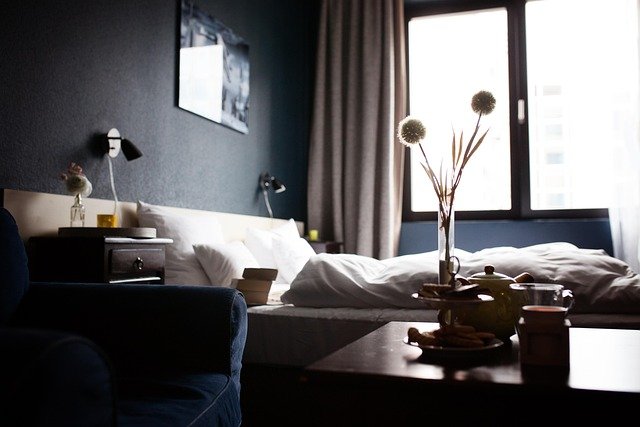Sonic Serenity: The Rise of ASMR-Inspired Home Design
A gentle rustle of silk curtains, the soft patter of rain on a copper roof, the soothing crackle of a vinyl record – these aren't just ambient sounds, they're the cornerstone of a revolutionary approach to interior design. Welcome to the world of ASMR-inspired home decor, where auditory pleasure meets visual aesthetics to create spaces that don't just look good, but sound good too.

The Sound of Comfort: Understanding ASMR in Design
ASMR, a term coined in 2010, refers to the pleasurable tingling sensation some people experience in response to specific auditory or visual stimuli. While initially confined to the digital realm of YouTube videos and podcasts, designers and homeowners are now incorporating ASMR principles into physical spaces.
This innovative approach to home design focuses on creating environments that stimulate multiple senses, with a particular emphasis on sound. The goal is to craft spaces that not only look inviting but also sound soothing, promoting relaxation and well-being through carefully curated auditory experiences.
Acoustic Architecture: Building with Sound in Mind
The foundation of ASMR-inspired design lies in the careful consideration of a room’s acoustic properties. Designers are now paying as much attention to how a space sounds as to how it looks. This involves selecting materials and structures that create pleasing soundscapes.
For instance, the use of sound-absorbing materials like cork flooring or acoustic panels can help create a hushed, calming atmosphere. Conversely, strategically placed hard surfaces can be used to amplify and direct soothing sounds, like the trickle of a indoor water feature or the subtle chime of a clock.
Textural Symphony: Fabrics and Finishes that Whisper
In ASMR-inspired interiors, textures play a dual role – they’re both tactile and auditory elements. Designers are selecting fabrics and finishes not just for their visual appeal, but for the sounds they make when touched or moved.
Velvet curtains that make a soft swishing sound when drawn, leather upholstery that creaks gently when sat upon, or wooden floors that offer a satisfying click-clack under footsteps – these are all examples of how texture can contribute to a room’s auditory atmosphere. The key is to create a balanced symphony of subtle sounds that enhance the overall sensory experience of the space.
Whisper-Quiet Technology: The Silent Revolution
In stark contrast to the cacophony of beeps and buzzes that often characterize modern homes, ASMR-inspired design embraces silence as a luxury. This has led to a surge in demand for whisper-quiet appliances and technology.
From silent ceiling fans to ultra-quiet dishwashers and refrigerators, manufacturers are responding to this trend by developing products that operate at near-silent levels. Even smart home systems are being designed with ASMR principles in mind, featuring soft-spoken virtual assistants and gentle notification sounds that blend seamlessly into the home’s auditory landscape.
Sonic Decor: When Sound Becomes Art
Perhaps the most intriguing aspect of ASMR-inspired design is the emergence of sonic decor – objects and installations designed specifically for their auditory properties. These pieces blur the line between functional items, art, and sound therapy.
Examples include kinetic sculptures that produce gentle, rhythmic sounds, wind chimes designed for indoor use, or even digital art installations that respond to movement with soothing audio feedback. These elements add an extra dimension to home decor, creating spaces that are not just visually stunning but aurally engaging as well.
The Psychology of Sound: Designing for Well-being
The ASMR-inspired design movement is more than just an aesthetic trend – it’s rooted in the growing understanding of how our environment affects our mental health and well-being. By creating spaces that are sonically pleasing, designers aim to reduce stress, improve sleep quality, and enhance overall relaxation.
Research has shown that certain sounds can lower heart rate, reduce cortisol levels, and induce a state of calm. ASMR-inspired homes leverage this knowledge, incorporating elements that produce these beneficial sounds naturally throughout the day.
Challenges and Considerations
While the concept of ASMR-inspired design is intriguing, it’s not without its challenges. One of the main hurdles is the subjective nature of ASMR – what’s soothing to one person might be irritating to another. Designers must navigate this by creating flexible spaces that can be easily customized to individual preferences.
There’s also the challenge of balancing ASMR elements with practical concerns. For instance, while a water feature might provide a soothing sound, it also requires maintenance and could potentially increase humidity levels in a room.
The Future of ASMR in Home Design
As our understanding of the relationship between sound and well-being grows, it’s likely that ASMR-inspired design will continue to evolve. We may see the development of more sophisticated sound-sculpting technologies, allowing homeowners to customize their auditory environment with the touch of a button.
There’s also potential for this trend to influence architecture on a larger scale, with buildings designed to create specific soundscapes that promote relaxation and productivity.
A New Dimension in Home Comfort
ASMR-inspired home design represents a fascinating intersection of neuroscience, technology, and interior design. By considering the auditory aspects of our living spaces, we’re adding a new dimension to the concept of home comfort.
As this trend continues to gain traction, we can expect to see more homes that don’t just look good, but sound good too. Whether it’s the gentle rustle of silk curtains or the soft patter of rain on a copper roof, these ASMR-inspired spaces are set to redefine our understanding of what makes a house a home. In the quest for domestic bliss, it seems that the sound of silence – or rather, the right kind of sound – might just be golden.





